Bibliography
- Fischer I: Biographisches Lexikon der hervorragenden Ärzte der letzten fünfzig Jahre. T. 2. München-Berlin: Urban & Schwarzenberg, 1962, P. 1250.
Moriz Probst | |
|---|---|
| Born | 1 October 1867 |
| Died | 21 March 1923 (aged 55) |
| Nationality | Austrian |
| Occupation(s) | psychiatrist and neuroanatomist |
Moriz Probst (1 October 1867 in Deutschlandsberg - 21 March 1923 in Vienna) was an Austrian psychiatrist and neuroanatomist. He is best known for first description of so-called Probst bundles, the anomalous brain structures found in dysgenesis of corpus callosum.
He studied medicine in Graz, after graduation he worked as an assistant in Neuropsychiatric Clinic in Graz under Gabriel Anton. Later he was affiliated with Wiener Irrenanstalt. Since 1900 he practised as forensic psychiatrist in Vienna. He worked also in Landesirrenanstalt neuroanatomical laboratory.
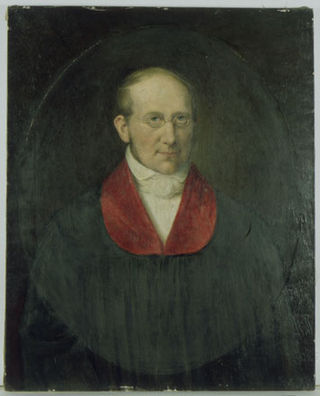
Hermann Friedrich Stannius was a German anatomist, physiologist and entomologist. He specialised in the insect order Diptera especially the family Dolichopodidae.

Wilhelm Griesinger was a German neurologist and psychiatrist born in Stuttgart.
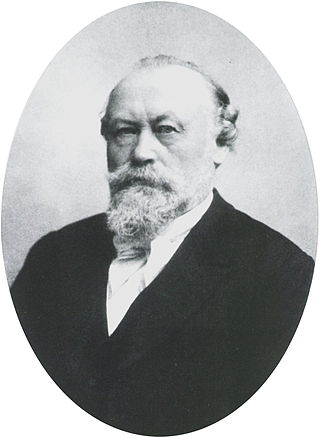
Prof Eduard Friedrich Wilhelm Pflüger FRSFor HFRSE was a 19th-century German physiologist.

Carl Wedl was an Austrian pathologist who was a native of Vienna.
Johannes Adolf von Kries was a German physiological psychologist who formulated the modern “duplicity” or “duplexity” theory of vision mediated by rod cells at low light levels and three types of cone cells at higher light levels. He made important contributions in the field of haemodynamics. In addition, von Kries was a significant theorist of the foundations of probability.

Friedrich Schultze was a German neurologist and native of Rathenow, Brandenburg. He is known for being the founder of child neurology.

Leonard Landois was a German physiologist born in Münster.

Franz Joseph Andreas Nicolaus Unger was an Austrian botanist, paleontologist and plant physiologist.
Josef Gerstmann was a Jewish Austrian-born American neurologist.
Friedrich Meggendorfer was a German psychiatrist and neurologist.

Otto Kalischer was a German anatomist and neurologist.
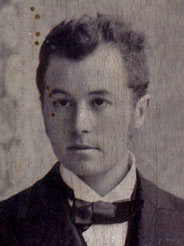
Siegfried Kalischer was a German neurologist and researcher.

Pflügers Archiv: European Journal of Physiology is a peer-reviewed scientific journal in the field of physiology. A continuation of a journal founded in 1868 by the German physiologist, Eduard Friedrich Wilhelm Pflüger, Pflügers Archiv is the oldest physiological journal. Pflügers Archiv is currently published by Springer, with 11 issues per year.
Arnold Kutzinski was a controversial German psychiatrist and neurologist, known as both an outspoken critic of psychoanalysis and a supporter of eugenics.
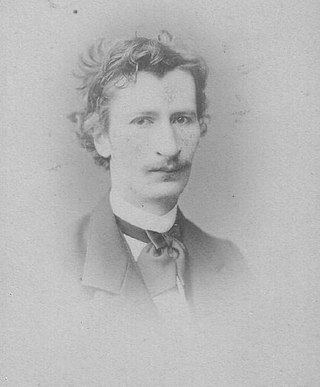
Hans Paul Bernhard Gierke was a German anatomist who was a native of Stettin.
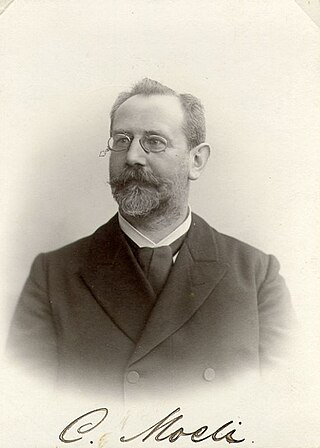
Carl Franz Moeli was a German neurologist and psychiatrist born in Kassel.
Otfrid Mittmann was a German mathematician. Starting in 1927, he studied mathematics and natural sciences in Göttingen and Leipzig, and got his Ph.D. in Apr 1935. He joined the Nazi movement in Oct 1929. and published on statistical aspects of Nazi eugenics. After the war, he published in Göttingen and Bonn.
Olga Vassilievna Leonova, later Leonowa-von Lange born 1851 or 1859 was a physician and embryologist known for her studies of neuroembryology and congenital disorders, specifically those affecting the brain, spinal cord, eyes and limbs. Leonova was one of the first female scholars to work in Constantin von Monakow's laboratory ("Labörli"), founded in 1885, the origin the Zürch Brain Research Institute Brain Research Institute of Zurich University. Leonova, born in Russia, studied medicine in Moscow, St. Petersburg, Vienna and Leipzig. Later she did research work at the Imperial University of Moscow's cutting-edge neurobiology laboratories. Her research focussed on stillborn infants with congenital brain disease. Here she described the connection between central nervous system damage and congenital eye disease. She earned her doctoral degree before 1904, published at least 12 scientific papers between 1890 and 1909 but did not show further scientific development (Refs.). After a head start into the European neuroscience scene in 1894 as the only lady scientist presenting at the 66. central conference of German speaking naturalists and physicians in Vienna, she later apparently lost the support of the science community. This may partly be due to her argumentative, almost belligerent style of writing. Her work was cited for a short period and the forgotten. She eventually resided in a villa in Laufenburg, Germany, at the border to Switzerland, and became arrested in 1914 as a Russian spy. After two years she was allowed to move to Zürich.
August Franz Josef Karl Mayer was a German anatomist and physiologist.
Alois Biach was an Austrian physician and medical writer.